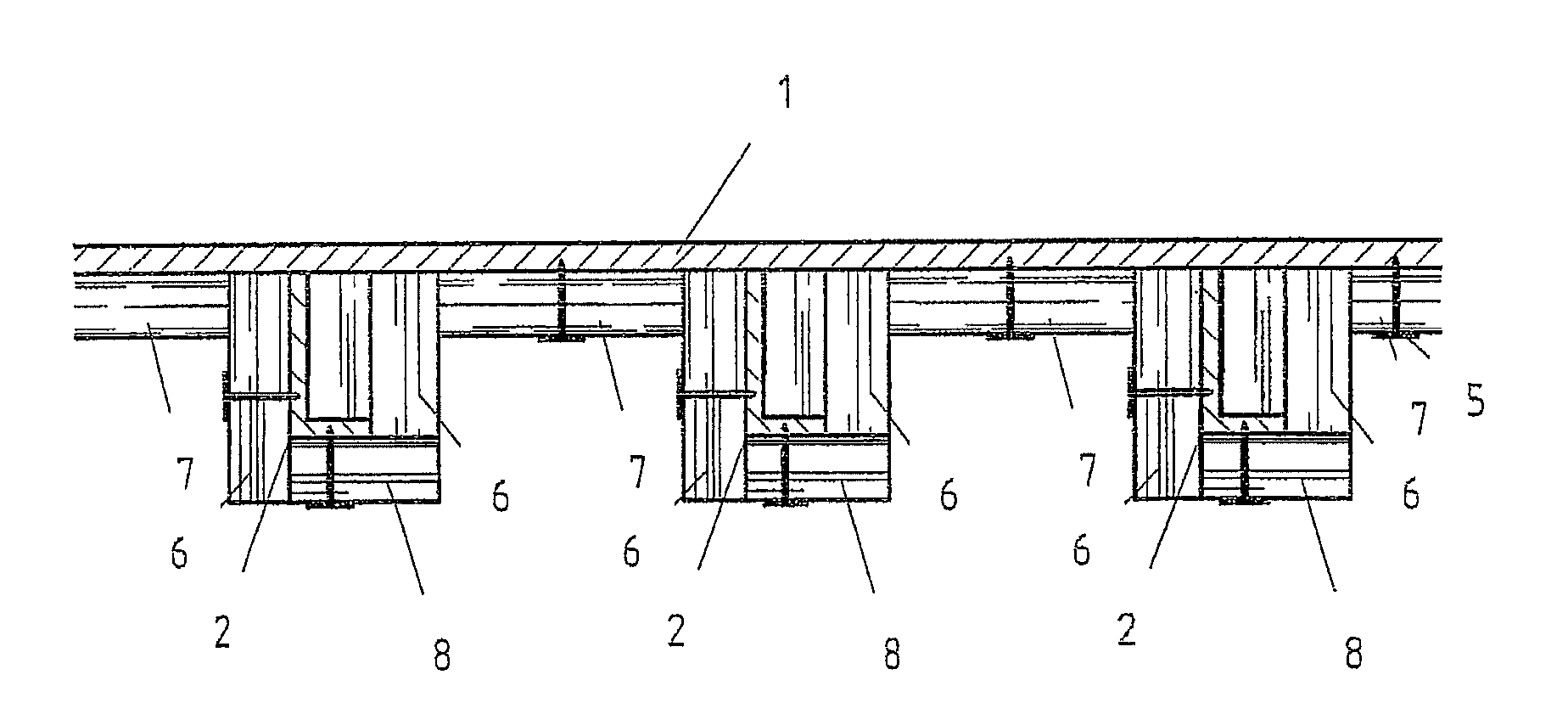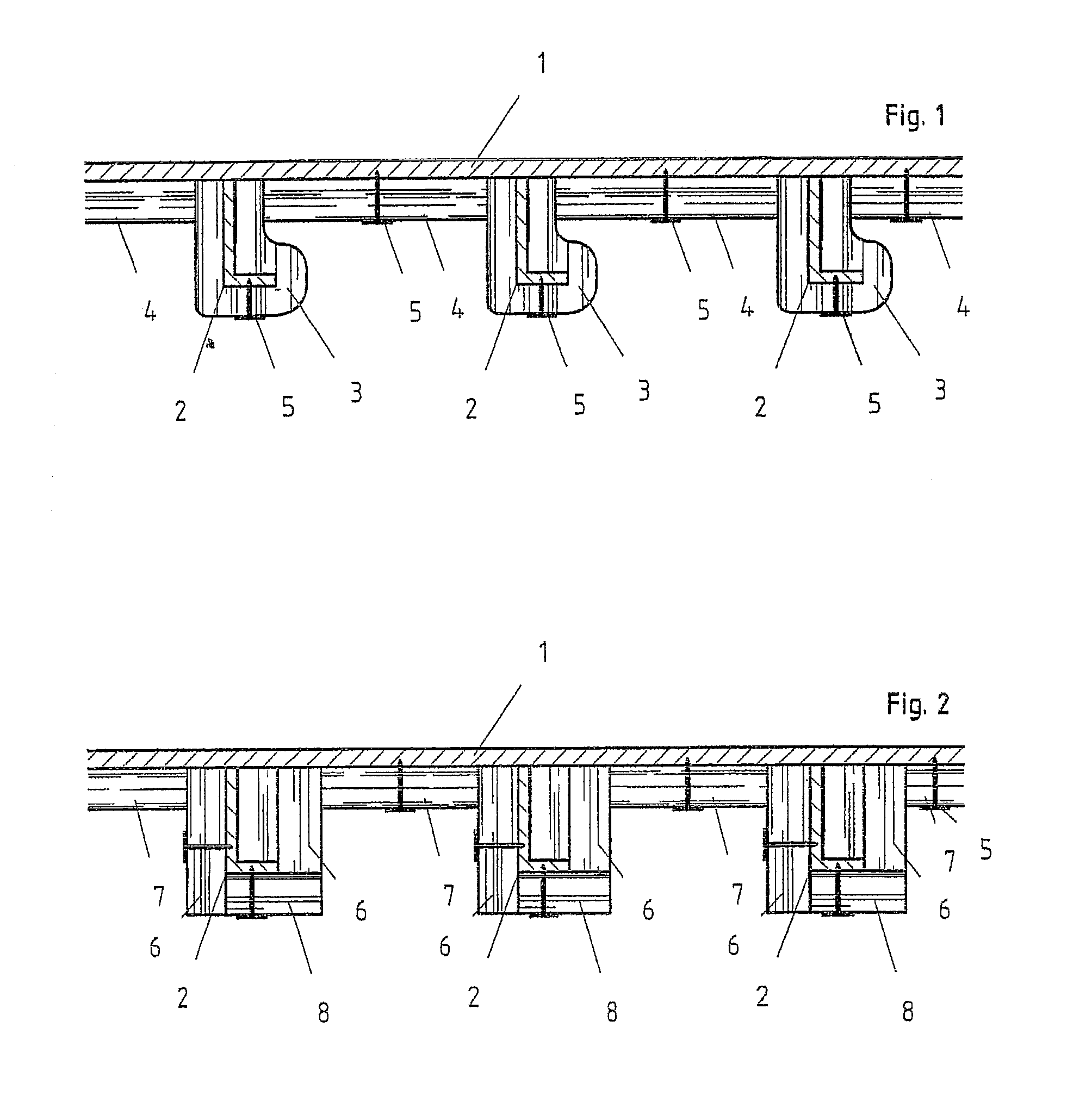Insulating element from mineral fibers for shipbuilding
a technology of mineral fibers and insulation elements, applied in the field of insulation elements of mineral fibers for shipbuilding, can solve the problems of increasing traction resistance, fuel consumption, increasing unwanted weight, etc., and achieves the effect of reducing weight, reducing weight, and negatively affecting requirements
- Summary
- Abstract
- Description
- Claims
- Application Information
AI Technical Summary
Benefits of technology
Problems solved by technology
Method used
Image
Examples
Embodiment Construction
[0046]In FIGS. 1 and 2, the number 1 designates a vessel's deck, which, on its lower section, is reinforced with frames 2. The frames 2 feature commonly a L profile and are attached with their extended flank at the lower section of the ship's deck 1, by means of the welded seams, not shown, so that the best possible moment of resistance of the profile may be utilized for reinforcing said ship's deck 1.
[0047]A fire protection construction of such an area of the vessel consists, in principle, in that the lower section of the vessel's deck 1 is being protected in such a fashion against fire below the vessel's deck 1, that the high fire temperature in the area above vessel's deck 1 results to the threshold temperature rate only after a predetermined period of time. It is understood that the fire protection construction must also physically continue to exist, since otherwise an undesired thermal passage would result with a consequent temperature increase.
[0048]In the example of FIG. 1, f...
PUM
| Property | Measurement | Unit |
|---|---|---|
| diameter | aaaaa | aaaaa |
| density | aaaaa | aaaaa |
| densities | aaaaa | aaaaa |
Abstract
Description
Claims
Application Information
 Login to View More
Login to View More - R&D
- Intellectual Property
- Life Sciences
- Materials
- Tech Scout
- Unparalleled Data Quality
- Higher Quality Content
- 60% Fewer Hallucinations
Browse by: Latest US Patents, China's latest patents, Technical Efficacy Thesaurus, Application Domain, Technology Topic, Popular Technical Reports.
© 2025 PatSnap. All rights reserved.Legal|Privacy policy|Modern Slavery Act Transparency Statement|Sitemap|About US| Contact US: help@patsnap.com



